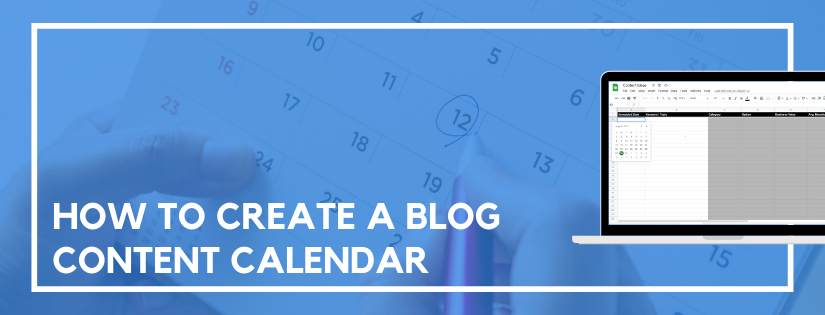One of the most challenging parts about blogging is being consistent. And consistency happens to be an important piece. One of the best ways to tackle this is to create a blog content calendar. We’ll go over everything you need to know to create a content calendar for your blog.
What is a Content Calendar?
Before we can discuss creating a content calendar, we need to understand what it is. A content calendar organizes your content ideas and assigns them to publish dates. The specific medium used to create the calendar can vary. It can be a spreadsheet, post-it notes, or even an actual calendar. It is a system that allows you to organize your content ideas based on when they will be published.
Why have a Content Calendar?
The content calendar helps you create a plan. It makes it easy to understand what to work on to stay on track. It helps hold you accountable.
Instead of a list of random ideas, the content calendar has a specific timeline. You have committed the content ideas to publish dates. Of course, it’s easy enough to make edits and change the schedule. But, it is easier to be consistent when you already have a plan. Content calendars allow you to commit to deadlines and plan ahead.
How to Create a Content Calendar
Step 1: Determine Posting Frequency
You’ll need to determine a posting frequency. Ideally, you’ll want to post weekly content. The most important part about your posting frequency is to be consistent while focusing on quality over quantity. So, if your schedule doesn’t accommodate weekly high-quality content updates, then aim for a schedule that gives you more time. You can post every other week or monthly instead. The more posts you’re able to create, the faster you’ll see your search engine traffic grow.
Step 2: Create a Spreadsheet
My go-to tool to create a content calendar is Google Sheets. Creating a spreadsheet is simple and gives lots of flexibility.
To get started with a content calendar, you can download the free Google Sheets template below.
To create your content calendar list out your post schedule dates based on your posting frequency. If you plan to post weekly, you’ll add a date for each weekday you plan to publish a new post. Then, in another column, document the article topic that will be posted that day.
You can also add any columns you’d like to carry over metrics you found during the keyword research stage. If you use the template above the metrics will automatically appear on the calendar tab when you select the topic using the dropdown list.
Step 3: Plan out Next Quarter
Assign topic ideas to every day you want to publish a post for the next quarter. So, roughly three months. If you have more ideas, do the full year. Keeping blogs current takes time. Get the keyword research out of the way so you have a full calendar ahead of you. That way, when you have blog time you can focus on writing and batching your posts instead of figuring out what to write next.
In Summary
A content calendar helps you stay organized. If you commit your content ideas to dates, it will be easier to blog consistently. Having a plan will help keep you moving in the right direction and make it that much easier to push forward.
Do you want to listen to this article? Here’s the podcast episode:
